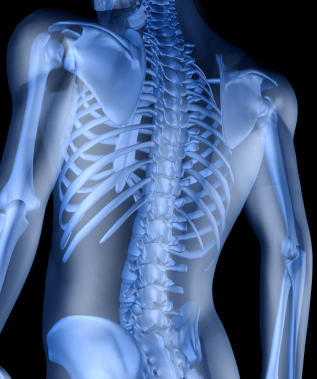THE ROLE OF CALCIUM IN EXERCISE
Calcium is the most abundant mineral in the human body and amounts to approximately 40% of the total minerals present. It is used by almost every cell within the body.
The majority of our calcium stores are located within bone (together with phosphorus) and here it plays an essential role in hardening the skeleton and teeth. It also has a role in body fluids and ionic calcium; essential for blood clotting and importantly for exercise, nerve impulse transmission and muscle contraction.
Bone - our cells need constant access to calcium from the blood supply. A deficiency of calcium within the blood will trigger hormones to secrete calcium from stores within the bones. If your dietary sources of calcium are lacking your body will continue to canibalise the mineral from your bones which over time can put you at risk from osteoporosis.
Muscle contraction - muscles cannot contract without the presence of sufficient calcium. Stores within the muscle are located in the sarcoplasmic recticulum. When a muscle contraction is required the nervous system sends a trigger to release calcium which in turn facilitates the binding of actin and myosin, the two myofilaments responsible for contracting the muscle.
Cardiac function - calcium helps regulate the speed and force of heart contraction.

Sources
The UK RDA for adults is 700mg of calcium a day. Dairy products provide around 60-70% of the typical intake of calcium in the western diet. Other useful sources include calcium fortified soya milk, bone containing fish such as sardines and tinned salmon, tofu, green leafy vegetables (with the exception of spinach), fortified flour and bread, pulses and some nuts.
It is important to factor in levels of bioavailablity - the amount of the mineral your body is able to absorb for use. Vegetables have a much lower level of bioavailable calcium than dairy products and so would need to be consumed in far greater quantities. As with all other parts of your diet, the best solution is to ensure you select sources from all the major food groups.
Factors enhancing absorption
![]() Vitamin D - the most important enhancing factor in calcium absorption. It causes the synthesis of calcium-binding protein in the intestinal cells that transport calcium into the plasma.
Vitamin D - the most important enhancing factor in calcium absorption. It causes the synthesis of calcium-binding protein in the intestinal cells that transport calcium into the plasma.![]() Lactose - keeps calcium in a soluble form.
Lactose - keeps calcium in a soluble form.![]() The acidic environment in the upper digestive tract. (Therefore, taking large amounts of indigestion medication that lowers acidity may compromise calcium absorption.)
The acidic environment in the upper digestive tract. (Therefore, taking large amounts of indigestion medication that lowers acidity may compromise calcium absorption.)
Inhibitory factors affecting absorption
![]() Phytic-acid present in whole cereals forms insoluble calcium phytate. However, yeast fermentation likely breaks this down. It is also believed that people who regularly eat foods containing phytate develop a phytate-splitting enzyme allowing them to make a greater use of calcium.
Phytic-acid present in whole cereals forms insoluble calcium phytate. However, yeast fermentation likely breaks this down. It is also believed that people who regularly eat foods containing phytate develop a phytate-splitting enzyme allowing them to make a greater use of calcium.![]() Oxalates (found in spinach, rhubarb, beetroot, chocolate, tea, wheat bran and strawberries) include calcium oxalate salt which is insoluble.
Oxalates (found in spinach, rhubarb, beetroot, chocolate, tea, wheat bran and strawberries) include calcium oxalate salt which is insoluble.![]() Non-starch polysaccharides (fibre) may trap some calcium making in unabsorbable in the small intestine. However, fermentation of the soluble fibre on the large intestine may release the calcium for absorption.
Non-starch polysaccharides (fibre) may trap some calcium making in unabsorbable in the small intestine. However, fermentation of the soluble fibre on the large intestine may release the calcium for absorption.![]() Unabsorbed fats will combine with calcium to form soaps, removing it from the body.
Unabsorbed fats will combine with calcium to form soaps, removing it from the body.![]() Calcium metabolism may be altered if phosphorus intakes are very high, but there is limited evidence that this affects calcium absorption.
Calcium metabolism may be altered if phosphorus intakes are very high, but there is limited evidence that this affects calcium absorption.
So we've estabilished how vital calcium is in the key processes of human movement and function. It is important to maintain adequate levels. Hypocalcemia (low blood calcium level) can cause muscle irritability including muscle cramps in your back and legs. Hypercalcemia (abnormally high blood calcium level) causes muscle weakness and sluggishness. Blood calcium levels need to critically elevated for the symptoms of hypercalcemia to manifest themselves.
If you require any further nutritional advice don't hesitate to contact us.
